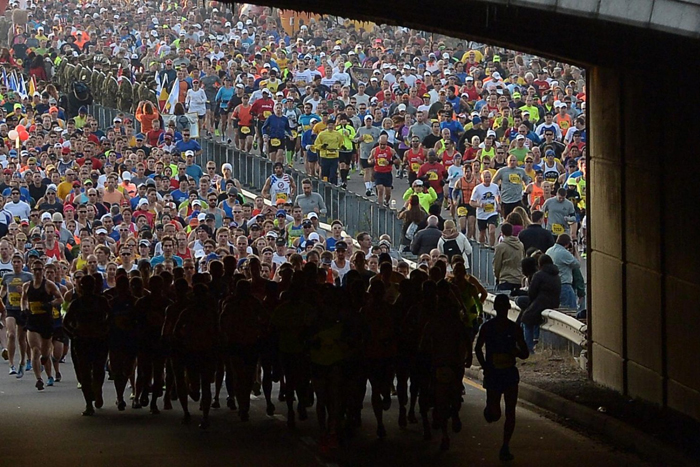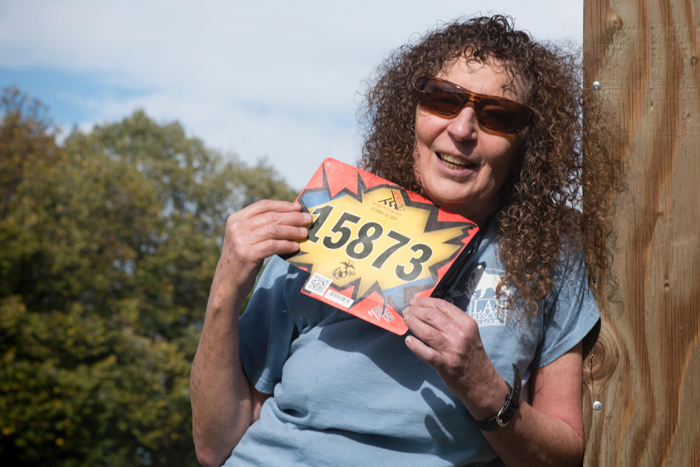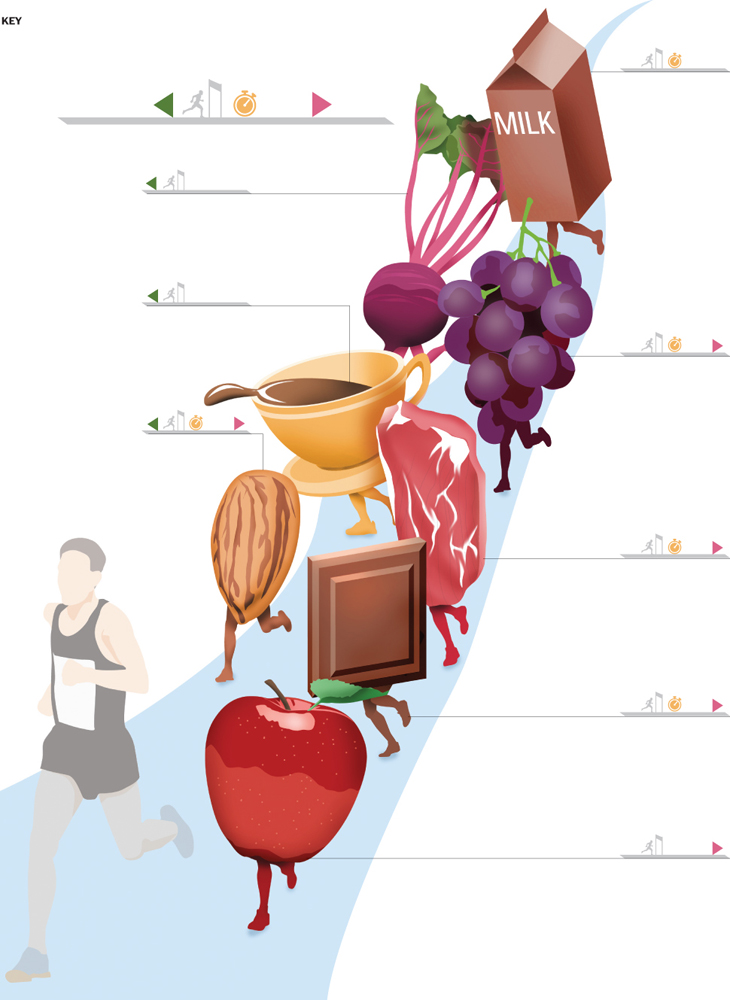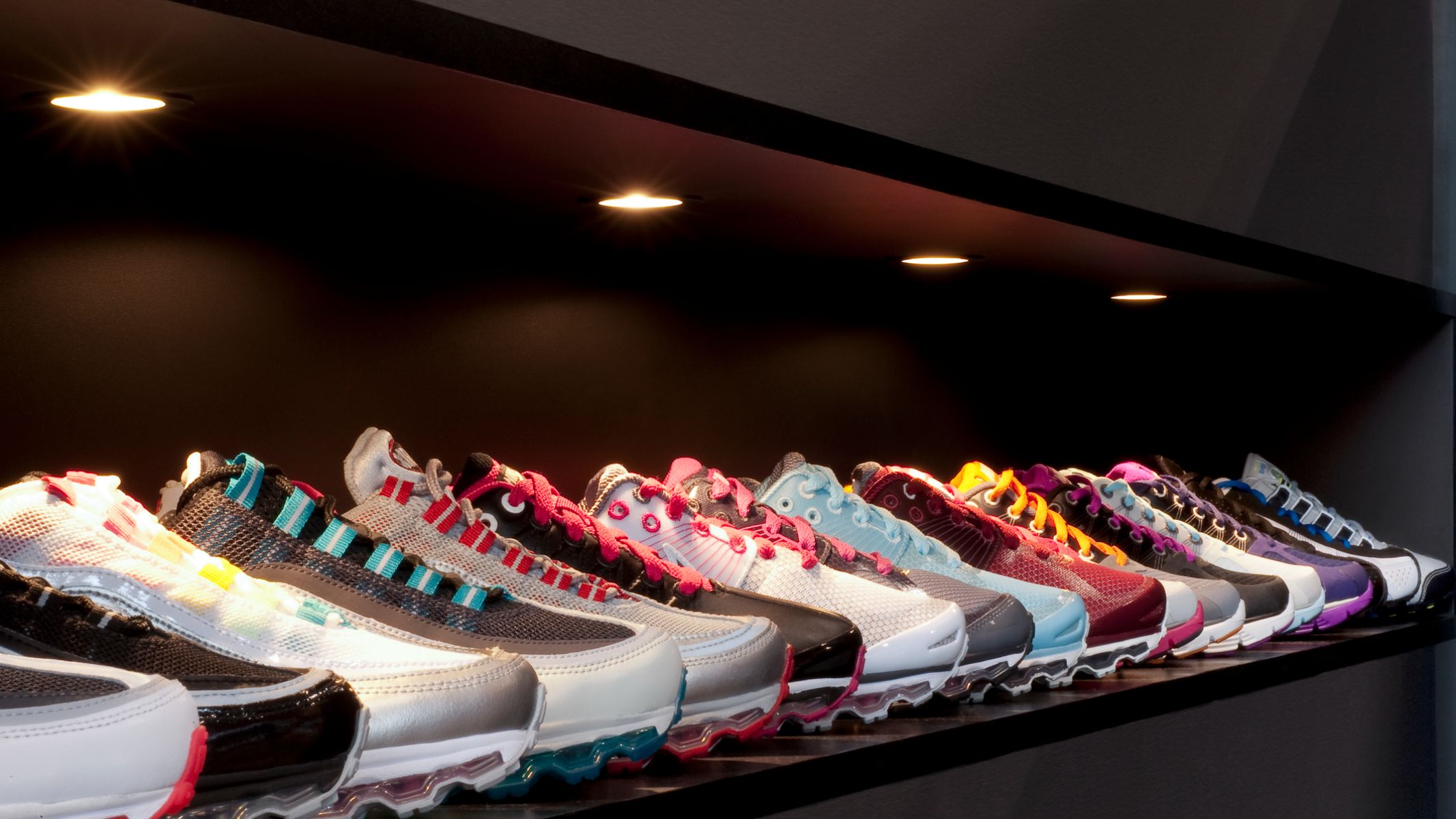
Aging Marathoner: Still Running, but at a Much Slower Pace

This article was originally published in the Washington Post. Cimons contributed this article to Live Science's Expert Voices: Op-Ed & Insights.
This is the tale of an ancient marathoner, a story of challenge, expectation, nostalgia, disappointment and acceptance. It almost sounds like the stages of grief and loss. And in a way, it is: At 69 years old, I have lost my younger self, the one who for years could run 26.2 miles in less than four hours.
It is tough competing with memories. I discovered this on Oct. 26 when I ran in Washington’s Marine Corps Marathon, my 12th overall, an experience that forced me to confront the realities of aging.
I started running in May 1980, when I was 35, and I ran my first marathon 18 months later, completing the New York course in 3 hours, 55 minutes and 9 seconds. I cut another two minutes off my marathon time the following year, and, at age 38, I ran a personal best of 3 hours, 44 minutes and 49 seconds. In all, six of my dozen marathons were sub-four-hour times.
But then in 2000, when I was 55, I ran New York again and barely broke five hours. Discouraged, I thought it probably would be my last. But, as they often do, things change.
On Feb. 4, my nearly 13-year-old chocolate Lab died. I was devastated. I decided to honor Hershey’s memory by running a marathon to raise money from friends for two animal welfare groups.

I didn’t know what to expect. To be sure, I was older. But in recent years, I’d lost more than 30 pounds by eating more healthfully. I swim a mile almost every day, I take daily runs of five or six miles, and I regularly lift weights to maintain muscle strength and prevent frailty. I was hoping all this might counter the slowdown caused by aging. I knew that closing in on 70 would affect my marathon performance. I just didn’t know how much.
The aging effect
“Once we hit about 65 or 70 years old, the decline seems to be more pronounced,’’ says Scott Trappe, a professor of exercise science and director of the Human Performance Laboratory at Ball State University in Muncie, Ind. “It doesn’t mean you can’t be a competitive athlete, but the impact of the aging process on performance seems to be more accelerated once we hit the magic age of 70.”
A person’s cardiovascular system shrinks with age: The heart becomes smaller, its pumping capacity decreases, total blood volume drops and blood vessels become stiffer, according to Trappe. As a result, the VO2 max — a measure of oxygen use during intense exercise — decreases.
“The maximum heart rate goes down — that is, the number of beats per minute when you are going all-out,’’ meaning an athlete delivers less oxygen to the muscles, hurting both speed and endurance, says Michael Joyner, a Mayo Clinic researcher who studies how humans respond to the stress of exercise.
We also lose muscle mass as we age, which is why strength training is so important. And we lose fat on the balls of our feet, a cushion that protects against the pain of high-mileage running.
But the news for older exercisers is not all bad. “You can’t reverse the effects of aging, but you certainly can slow them, especially compared to your non-exercising peers,’’ Trappe says. “We have data on 80-year-olds who exercise regularly. While they aren’t what they were in their youth, their cardiovascular systems look like those of non-exercising 40-year-olds. So, from an exercising standpoint, 80 is the new 40.’’
This was reassuring for the future, although not necessarily for my marathon performance.

During the summer, I began building my weekly long runs to five hours, but I had no good idea how much distance I was covering. I knew only that I had to get my body accustomed to running at least five hours because I would almost certainly be on the course that long, if not longer.
I began to notice something ominous on those runs: Other runners who looked really slow were passing me.
Then I went to the track, where more bad news awaited.
Another key element of race preparation is speed drills — that is, running short intervals as quickly as possible to improve your conditioning with the goal of shaving time on the big day.
Thirty years ago, I ran quarter-miles in 90 seconds, equal to a 6-minute mile. By 2000, I was running them in 110 seconds — slower, but still a sub-8-minute pace. But now, I barely could crank out a quarter-mile in 2:20, just breaking the 10-minute barrier.
Curious, I tried running a hard mile. My stopwatch read: 11:46. Good grief. Have I become that slow? Did I really once run an entire marathon at an 8:33 pace?
“You are more elite than you think you are,’’ Trappe told me when I shared this with him. “Not many 69-year-old women are running marathons. You need to stop comparing your 69-year-old self to your 38-year-old self, and start comparing your 69-year-old self to other 69-year-olds who aren’t exercising.’’
Joyner agreed. “If you’re still running intervals at your age, you’re ahead of the game,’’ he said.
Still, I worried. In five previous Marine Corps races, I’d scoffed at the cutoff time, when slower runners had to board the “straggler’’ buses to allow streets along the course to reopen to traffic. Could I make it to the 20-mile mark, the D.C. side of the 14th Street Bridge, by 1:15 p.m.?
I was starting to fear no.
Race day
They say the marathon has two halves: the first 20 miles and the last 10 kilometers. It’s true.
On the day of the race, the temperature started in the 50s and began to climb, warm for a marathon, with an unrelenting sun on a course with little shade.
I felt pretty good for most of the first 20 miles. I was relieved to see that after my first mile — 12 minutes — I had settled into a 13-minute pace. If I could keep this up, I easily would make it to the bridge and avoid the ignominy of the straggler bus. I knew I would get slower later, but I embraced every 13-minute mile as money in the bank.
At Mile 5 in Georgetown, a thoughtless spectator yelled: “Almost there!’’ This prompted me to utter something unprintable. The runners around me laughed, and I relaxed.
Some marathoners take in the sights — the bands, the crowds, the spectators who want to high-five you — but not me. Usually, I just put my head down and run. I usually look up only to spot the water stations and mile markers, computing my mile times.
After Georgetown, the course winds up Rock Creek Parkway and back down again from miles 6 through 9. On the way down, you can see who is behind you. I was happy to see that there still were many runners making their way up the parkway as I was heading down. But I wasn’t fast enough to escape the sight of four big buses trailing the final participants. The straggler buses. I put my head down and pressed on.
I was still feeling comfortable by the time I got to the halfway mark, Hains Point, and I was on target for the bridge. But pretty soon the balls of my feet began to hurt.
I’d been afraid of this. I have neuromas in my feet, which are growths around the nerves that lead to the toes. Most of the time, they don’t bother me. But most of the time, I don’t run marathons. My podiatrist blames the pain on that loss of protective fat due to aging.
Aging feet
I began to take brief walking breaks — no more than 30 seconds each — when a race volunteer approached. “Ma’am, are you all right?’’ she asked. “I’m fine,” I told her. “Why?’’ “Your lips look blue to me,’’ she responded. “Can you give me a few hard coughs?’’ she said. I did, and she sent me on my way.
I made it to the bridge with 40 minutes to spare. By then, though, it felt as though I was running on hot coals.
As I began to walk/jog, the final 10 kilometers — 6.2 miles — and I took some comfort in seeing that many of those around me — also walking — seemed to be half my age. But I also realized then that I had made a big transition: A longtime member of the middle of the pack, I had joined the back of the race.
Finally I could see the finish line at the top of a long hill. I lifted my head up to take in the sight as it got closer and closer. I ran those last few hundred yards, thrilled as my name — and age — was announced over the loudspeaker. It was the slowest marathon I’d ever run — 6 hours, 21 minutes and 52 seconds — but I finished, and 1,170 runners finished behind me. I was 39th among the 50 women in my age group (65-69). As it turns out, 109 runners did not reach the bridge in time and had to ride the bus to the finish. If I had been just a touch slower, had walked just a bit more, I might have been on that bus.
Reaching another stage
Looking at the clock at the finish line, I realized I had reached the state of acceptance: My younger and faster running self was gone for good.
But then it hit me. There is another stage: exhilaration. I feel it each time I finish a marathon, and this time it was no different.
My friend Amby Burfoot, 68, former editor of Runner’s World magazine and the 1968 winner of the Boston Marathon, expresses it very well. A 2:14:29 marathoner at his best, he now runs them for fun, finishing Boston last spring in 4:40. “It’s very hard adjusting to the fact that the stopwatch and the calendar don’t lie,’’ he says. “You can’t win the race against time, so you have to win it emotionally and be okay with it. Anyone can be fast and healthy in his or her 20s. The real challenge is to be slow and healthy in your 60s and 70s.’’
He is right. You never know what life is going to hand you. In recent years, I have reconnected with many friends from high school and college. Some have gained weight or are having knees and hips replaced. Another struggles with a spinal disorder and can’t even walk to her mailbox.
But I still go out every morning and run, these days with Watson, the beautiful black Lab mix I adopted recently. And I look at every mile as a gift, regardless of how fast I run it.
Cimons is a former columnist for Runner’s World magazine who frequently writes on health issues for The Post. Follow all of the Expert Voices issues and debates — and become part of the discussion — on Facebook, Twitter and Google +. The views expressed are those of the author and do not necessarily reflect the views of the publisher. This version of the article was originally published on Live Science.
Sign up for the Live Science daily newsletter now
Get the world’s most fascinating discoveries delivered straight to your inbox.










